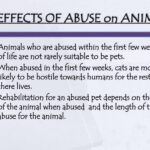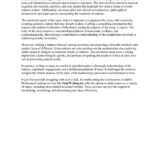Animal cruelty is an insidious global issue that transcends geographical boundaries, cultural differences, and socioeconomic status. From urban centers to rural locales, the complexities surrounding animal rights vary significantly, yet the pervasive nature of cruelty knows no bounds. This article delves into the multifaceted question: Is animal cruelty a global issue? By examining various facets of animal rights worldwide, we can develop a comprehensive understanding of the phenomenon.
To comprehend the magnitude of animal cruelty globally, it is essential to define what constitutes such cruelty. Animal cruelty encompasses a spectrum of inhumane behaviors, including neglect, physical abuse, exploitation, and systematic oppression. These abuses can occur in different contexts—commercial, domestic, and wild. Thus, the toll that cruelty takes on animals ranges from individual suffering to alarming population declines in wildlife.
Across the globe, distinct patterns of animal cruelty emerge, reflective of local customs and economic frameworks. In numerous developing nations, the lack of stringent legal protections for animals perpetuates suffering and neglect. For instance, stray animals often roam the streets, victims of accidents, malnutrition, and disease due to a lack of community resources. In regions where poverty is prevalent, the ability to care for domestic animals diminishes, leading to widespread abandonment and maltreatment.
Conversely, in industrialized nations, the commodification of animals poses a different set of ethical dilemmas. Factory farming practices, inhumane transport conditions, and the pervasive use of animals for entertainment (e.g., circuses, zoos) starkly illuminate the ambivalence surrounding animal rights. Here, the challenge lies not only in recognizing the resulting distress endured by these creatures but also in navigating consumer advocacy. Many individuals remain oblivious to the practices behind the products they consume, often unintentionally supporting cruelty through their purchasing decisions.
Adding another layer to this issue is the intersection of culture, tradition, and animal rights. Cultural norms often dictate humane treatment, while in other instances, they can excuse gruesome practices. Festivals that involve animal sacrifices, for example, challenge the global community as they navigate cultural reverence against the suffering of nonhuman beings. Societies are often left grappling with questions of moral relativism—wherein differing ethical viewpoints collide. This leads to a profound philosophical inquiry: Can animal rights exist free from cultural bias?
Moreover, the rise of globalization has compounded the issue. As nations become increasingly interconnected, the demand for animal-derived products grows, leading to practices that exploit animals across international borders. An alarming instance involves the illegal wildlife trade, which poses a dire threat to biodiversity. Species such as elephants, rhinos, and tigers face existential crises as poachers capitalize on their body parts for lucrative black markets. This illicit trade not only underscores the cruelty inflicted upon individual animals but also jeopardizes entire ecosystems.
Legislative progress toward animal rights varies markedly between countries. In some jurisdictions, comprehensive animal protection laws have been enacted, paving the way for greater accountability. In others, the absence of legal frameworks allows for unchecked cruelty, highlighting the urgent need for reform. Advocacy organizations play a crucial role in influencing policy, yet the fight remains daunting. Comprehensive legislation and enforcement are essential steps in mitigating animal cruelty, yet they require robust public support to hold officials accountable.
Education emerges as another indispensable tool in combating animal cruelty. Raising awareness about the plight of animals fosters empathy and encourages individuals to take an active stand against cruelty. Curricula that incorporate animal welfare education can change perceptions from an early age, nurturing a generation that values kindness toward all living beings. Initiatives within communities—such as volunteer programs at local shelters—can significantly contribute to improving the circumstances of vulnerable animals.
Technology, too, plays a pivotal role in shaping the discourse on animal rights. Social media serves as an invaluable platform for activists to educate the masses and galvanize support for various campaigns. Viral videos and compelling imagery have the power to evoke visceral reactions, leading to more significant public engagement. However, the reliance on digital activism must be matched with tangible commitment to foster sustainable change in the treatment of animals.
As we contemplate the question of whether animal cruelty is a global issue, it becomes evident that the answer is a resounding yes. The dimensions of this issue intertwine with socio-economic factors, cultural context, and legislative frameworks—resulting in a complex tapestry of cruelty that weaves through every corner of the globe. The collective responsibility falls on humanity to forge a pathway toward greater awareness, understanding, and ultimately change.
In conclusion, addressing animal cruelty requires a multifaceted approach that touches on legislation, education, cultural understanding, and consumer awareness. Advocacy, whether through grassroots movements or high-level policy changes, demands unwavering commitment. By recognizing animal cruelty as a pressing global issue, we embrace the opportunity to shape a society that champions the rights of all creatures. The call for compassion reverberates—transcending borders, cultures, and time—and urges every individual to partake in the noble pursuit of a world where every being, great and small, can live free from fear and suffering.








